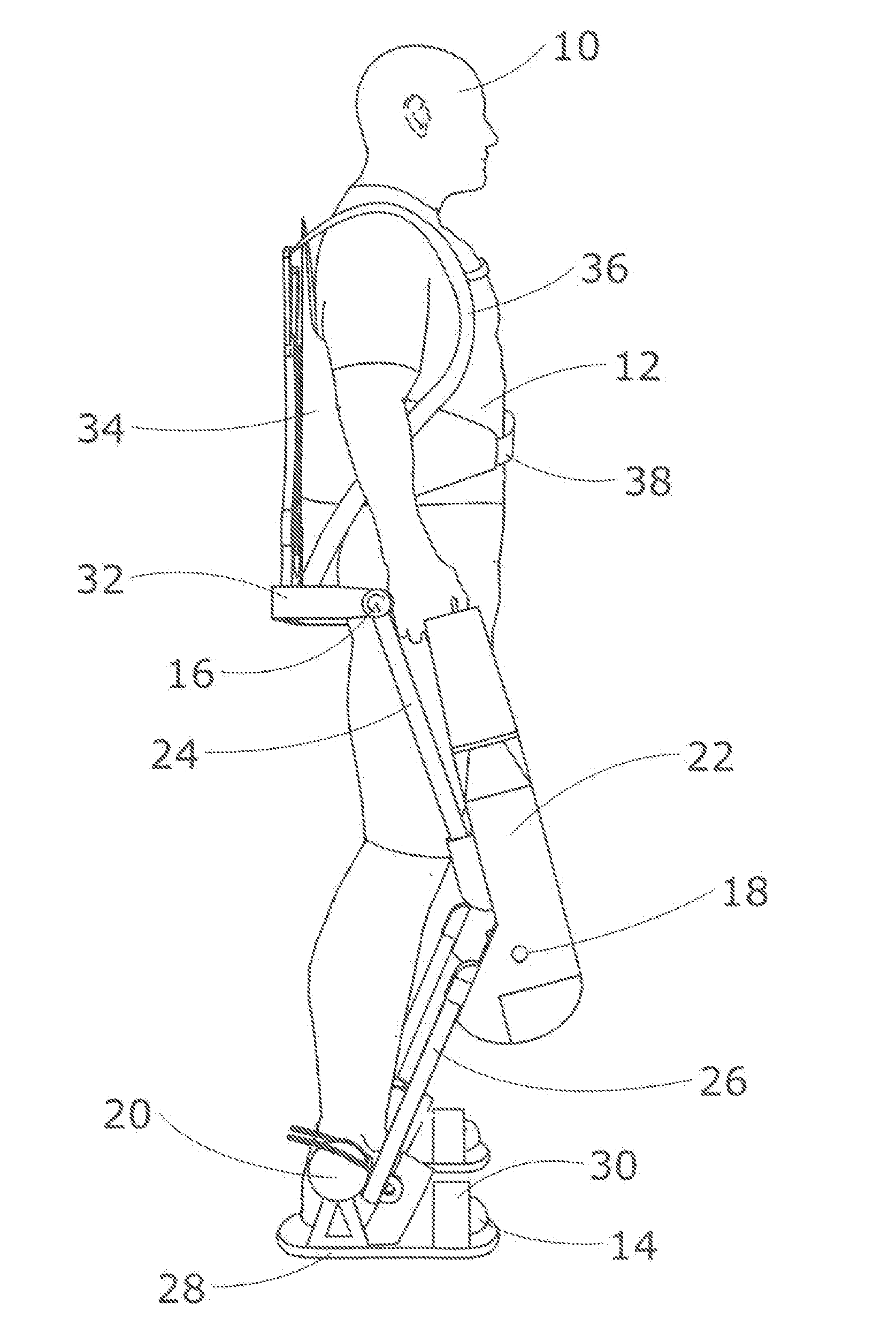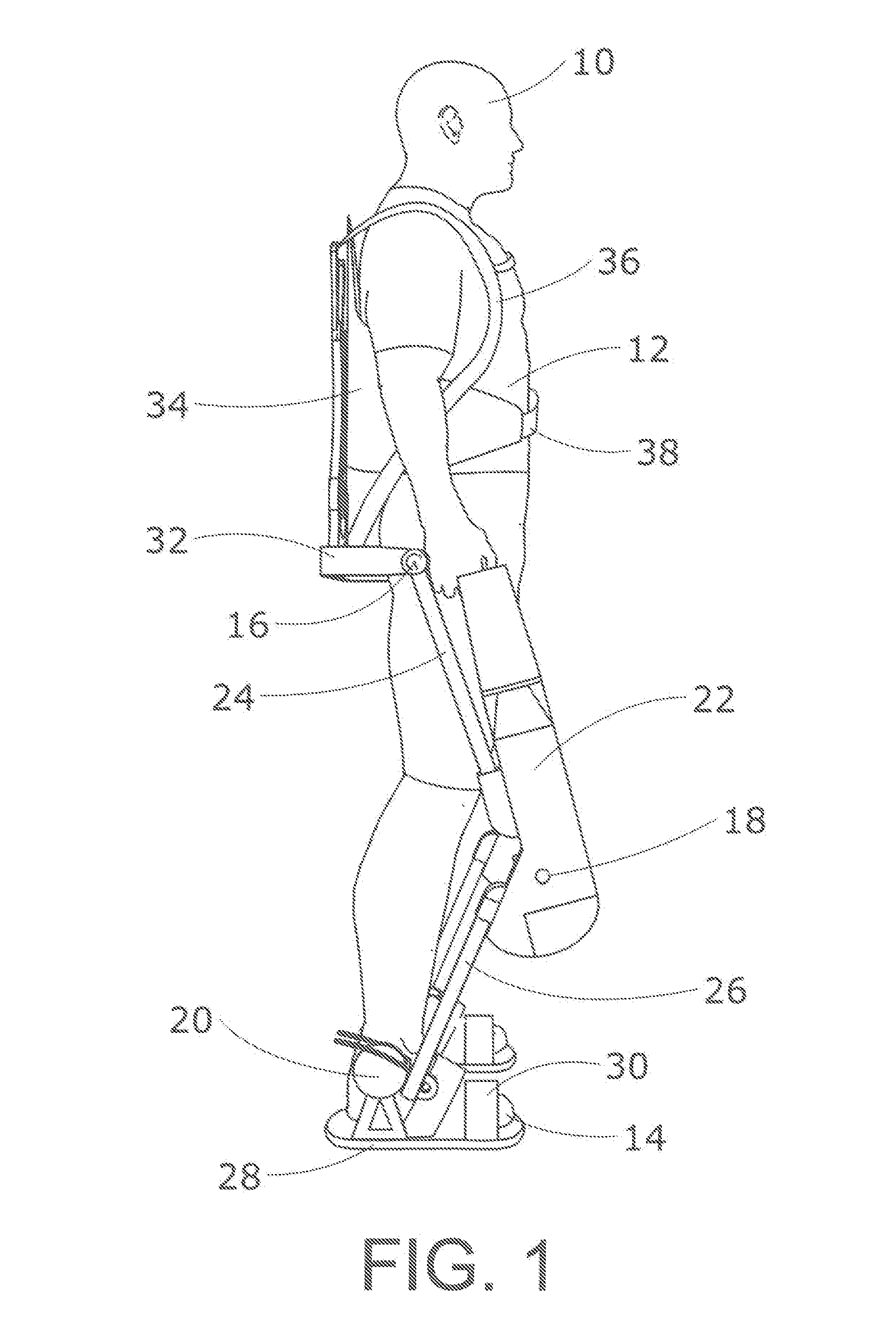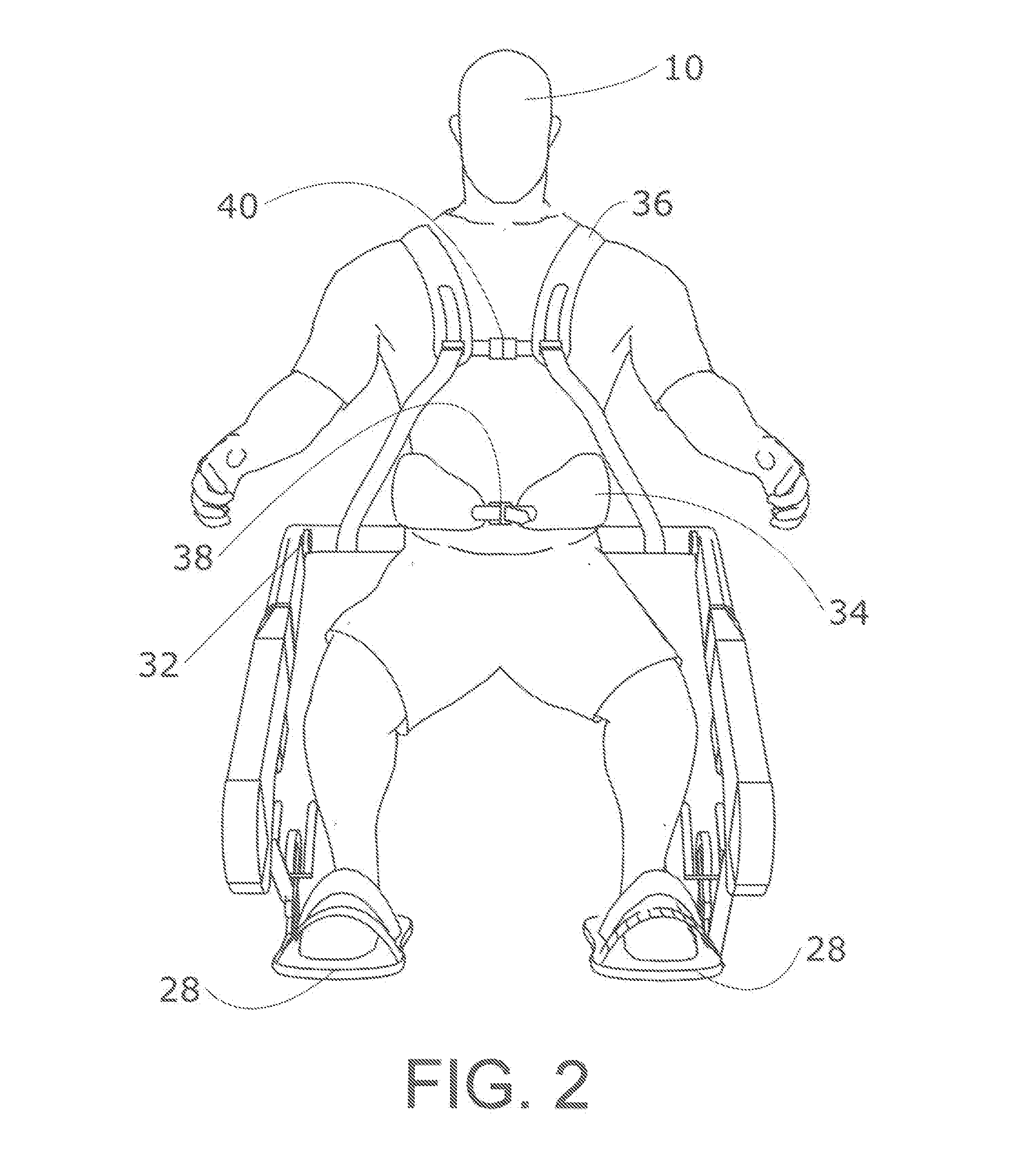Exoskeleton-Based Exercise and Training Device
a training device and exoskeleton technology, applied in the field of physical exercise equipment, can solve the problems of bone loss and other undesirable effects on the human body, difficulty in designing such devices, and loss of muscle mass
- Summary
- Abstract
- Description
- Claims
- Application Information
AI Technical Summary
Benefits of technology
Problems solved by technology
Method used
Image
Examples
Embodiment Construction
[0041]FIG. 1 depicts user 10 wearing an embodiment of the robotic device. The moving parts of the device are attached to a static frame that is connected to the user's torso 12. Cradle 34 is connected to torso 12 using a waist strap 38 and a pair of shoulder traps 36. The waist and shoulder straps preferably include conventional snaps and adjustment buckles so that a user may easily connect the straps and adjust them for a desired fit.
[0042]Lower frame 32 is attached to cradle 34 and thereby to user 10. The lower frame mounts a pair of exoskeleton “legs,” each of which is connected to a foot plate 28. Each exoskeleton leg includes an upper link 24 and a lower link 26. Upper link 26 is pivotally connected to lower frame 32 at hip joint 16. In this embodiment hip joint 16 is a simple pivot joint. It is not powered in this embodiment and is instead free to rotate with minimal friction. Likewise, in the embodiment shown, ankle joint 20 is a simple, unpowered pivot joint.
[0043]Lower link...
PUM
 Login to View More
Login to View More Abstract
Description
Claims
Application Information
 Login to View More
Login to View More - R&D
- Intellectual Property
- Life Sciences
- Materials
- Tech Scout
- Unparalleled Data Quality
- Higher Quality Content
- 60% Fewer Hallucinations
Browse by: Latest US Patents, China's latest patents, Technical Efficacy Thesaurus, Application Domain, Technology Topic, Popular Technical Reports.
© 2025 PatSnap. All rights reserved.Legal|Privacy policy|Modern Slavery Act Transparency Statement|Sitemap|About US| Contact US: help@patsnap.com



